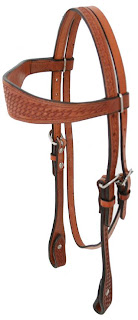The digital age has not only allowed the spread of photography but also the almost total control of all steps of image processing to anyone.
At the time of the film (not that they are now almost definitely) only the most hardcore fans are also committed to development of the negative and its printing on paper. This is because the whole procedure is quite complex, requires special equipment, acids and time spent in a completely dark room.
Today the whole process is simplified (apparently) because the tools to use are those that are still in possession of most amateur photographers: the computer and printer.
The negative
are few still do not know that the most advanced digital cameras (SLR or compact) offer the ability to shoot in RAW.
The RAW file contains all data recorded by the sensor without processing, why wont you call often digital negative. From it we can extract information that a photo in jpeg does not contain more, you can very easily make corrections would otherwise be impossible or very difficult and a file is hardly altered.
But it is not suitable to be used to provide a final image for printing or even for simple viewing on a PC and then prompts development.
development
development is through a program that can read the file and make a RAW file in another format. Often, this program allows you to make changes to the photo taken and the number of tools available and their effectiveness and ease of use depend on the program used.
I used RawShooter for years but has since been acquired by Adobe that they have stopped updating and development to make it merge the best features in Lightroom.
now own the latter program, which in addition to allowing a quick and easy development of RAW also allows the management of their stock photos.
My view is this: the best thing is to make as many interventions at this stage possible.
My experience tells me that the work on the RAW are those that produce a deterioration less than the final image quality and often are more effective (see white balance).
I always try where possible to get a photo done with the only conversion of RAW to jpeg.
If you really are interventions that can be done only in Photoshop, then convert the RAW files to TIFF first and work on that with other programs for photo retouching, and in the end, however, I get a Jpeg file that will be the final.
JPEG
The jpeg is a little printing, at least for those who now have even lost the habit to print on paper. Will this file to be "used" for all purposes possible: to be printed, to be published on the web, to be watched on PC or TV, to be sent via e-mail.
So why not shoot directly in Jpeg? Simple! Because in this way we would have finished only one file that would be better not to make more changes, a bit 'as if taken with a Polaroid that modern does not return a negative but a mail directly.
And why not make the adjustments directly to a jpeg? Because it is a compressed file with data loss, which means that when you create the jpeg it will be smaller but not all data will be present in source. A small part will be gone irretrievably lost and if you do so once the difference is hardly perceptible, repeatedly editing and saving a photo deterioration will become more pronounced.
Printing
Here are various schools of thought, as in all previous steps, however.
The photographer who wants to treat 100% of all steps should gear up for the printer and provide for themselves. There are now printers that can churn out prints of the highest quality and their price is not prohibitive, but the cost of paper and cartridge drives up the prices of individual prints to the point that I prefer rely to a lab.
Here, however, shows the need to find one who offers the highest standard, otherwise you'll be the product of a laboratory used to process orders of thousands of photos of 10-15cm tourists returning from vacation.
People in general like very sharp images and well saturated, and this makes these workshops!
Find one that suits you in paper quality, and not make changes to your photos and live happy!









